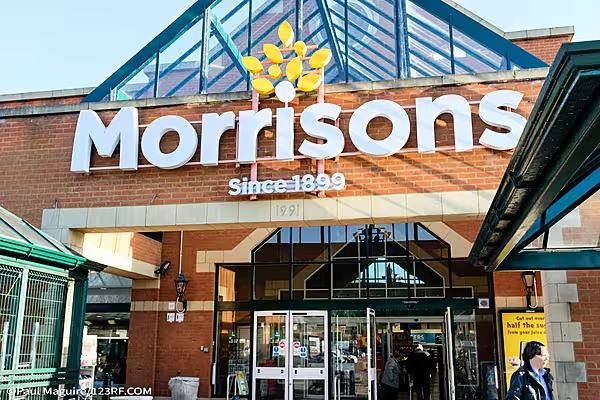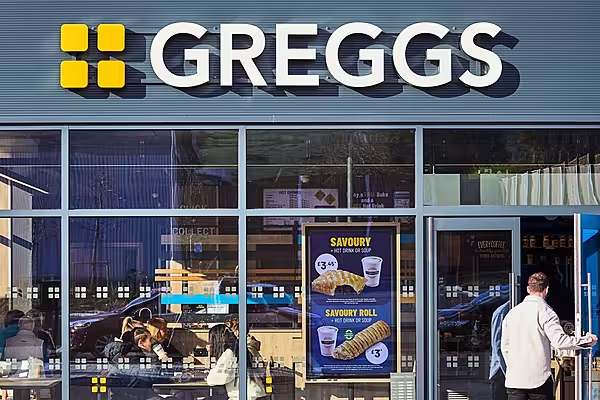This week, Marks & Spencer reported ‘robust’ first-half trading, with food sales up by 5.6% and clothing and home sales up by 14.0% in the period to 1 October.
“This progress means we face into the current market headwinds with an increased resilience and level of confidence,” commented chief executive Stuart Machin.
Here’s how leading industry analysts viewed its performance.
Russ Mould, AJ Bell
“UK retail institution Marks & Spencer has been making a better fist of things of late, but it is in a difficult spot right now.
“It doesn’t sit in the luxury space, where the clientele is insulated from cost-of-living pressures, nor does it offer the kind of value on offer from discount chains and grocers. Instead, Marks is wedged in a kind of squeezed middle, and that’s reflected in both a big drop in underlying profit and a gloomy outlook.
“There were some bright spots among the dark clouds, with trading reasonably resilient and the company enjoying decent fashion sales. This is quite the turnaround from a period where Marks & Spencer’s tired clothing offering was a real Achilles heel for the group.
“This is also a more efficient business, with a stronger balance sheet to weather what is sure to be a difficult period. That position is testament to the progress which has been made, and Marks & Spencer shareholders will hope that not all of that is unpicked by the current consumer turmoil.”
Clive Black, Shore Capital
“Marks & Spencer has issued robust H1 FY23 results that are a little ahead of our expectations, with CPTP at £206m – SC estimate £199m – against H1 FY22 delivery of £222m, excluding business rates relief. FY23 guidance is unchanged, save for the already announced updates to Ocado Retail guidance, and we are pleased to retain our CPTP forecast of £405m, and EPS of 15.2p.
“Looking into FY24 – with an uncertain UK macroeconomic outlook, to say the least – we also reiterate our bottom-of-the-range FY24 CPTP forecast of £313m. To us, lowly equity-rated M&S is controlling well what it can control, but we expect externalities – demand and cost inflation – to remain a challenge for all consumer-facing businesses.
“M&S is doing good work to us across the road, manifested in the better trading performances over the past couple of years. We have characterised the external environment as we see it extensively, for which the record is conservative. So, M&S, to our minds, is in good shape to take on whatever the economy presents to it. That said, we feel our cautious forecasts reflect the headwinds.”
Orwa Mohamad, Third Bridge
“Our experts say that overall revenues for the UK grocery market will be flat or in decline over the next six months. Any growth in revenues is going to be driven by inflation.
“Margin erosion will continue for at least the next 12-18 months because of M&S’s positioning. Our experts say that M&S needs to absorb some inflation costs because it lacks the scale advantages enjoyed by the likes of Tesco. It will probably look to reduce promotional activity first.
“This Christmas will be crucial for M&S. A lot hinges on the grocer’s ability to persuade people to have a restaurant-like experience at home, as they trade down from restaurants and meal delivery.
“The biggest challenge for M&S is shifting its image from an occasion shop to a weekly shop. There is a risk that large numbers of infrequent shoppers simply drop the brand from their repertoire as they trim back their discretionary spend.”
Jo Dawson, GlobalData
“M&S has exceeded our sales expectations with a strong trading performance in H1 FY2022/23, and achieved pre-tax profit of £208.5m – an 11.3% increase on last year. However, it has reported a 22.7% decrease in operating profit – £280.7m – due to investments in pricing and technology, and inflation leading to higher costs throughout the supply chain across the food, GM, and fuel divisions.
“Its food division has outperformed the wider UK grocery market, with sales up 5.6%, which can be attributed to increased footfall in stores outweighing a decrease in basket value, as the retailer’s focus on value for money, product innovation and high quality attracts customers trading down from foodservice operators and restaurants, and appeals to those wanting a treat in times of more considered spending.
“However, operating profits for M&S food are down 50%, following investment in pricing and increased running costs related to inflation, as well as a lack of business rates relief and a withdrawal from Russia.
“M&S faces tough Q3 comparatives, but we expect it to be one of the stronger high-street retailers this Christmas, gaining share across GM and food ahead of rivals. Its strong commitment to value and quality will encourage consumers to invest, especially among gift-buyers, safeguarding it from the price-led operators.”
© 2022 European Supermarket Magazine – your source for the latest retail news. Article by Stephen Wynne-Jones. Click subscribe to sign up to ESM: European Supermarket Magazine.














